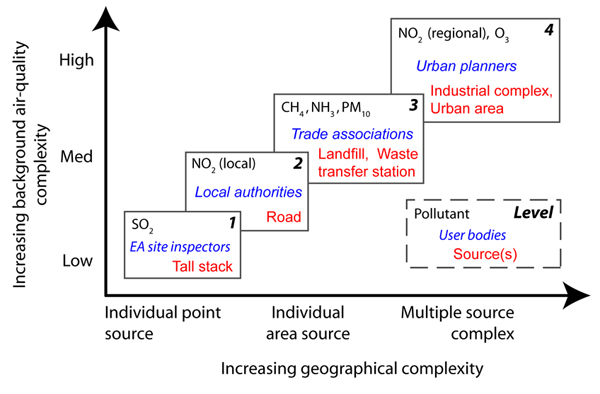Case Studies
We think that the best way to demonstrate novel techniques for analysing air-quality data is to apply the techniques to case-studies involving real-life air-pollution sources, data and management decisions. These will show the air-quality informatics potential of air-quality data and how more detailed information can be used to solve problems and inform decisions.The case studies will be timely and topical in order to show the environmental and socio-economic benefits that applying these techniques could deliver.
Initial ideas for case studies are outlined in the Case for Support and will progress in complexity from traditional pollutants such as Sulphur Dioxide (SO2) from combustion, to emerging priority pollutants such as Ammonia (NH3) from agriculture.
The cases will progress in complexity from well-defined individual sources, to more complex multiple sources. They will also progress from cases where background sources contribute little to ambient concentrations, to cases where background contributes substantially so local sources are harder to distinguish. This progression is shown schematically below.

More information about case studies can be found here
Homepage

